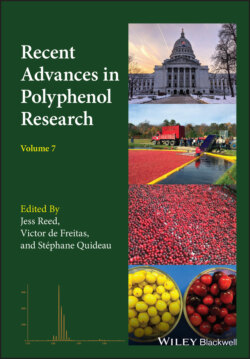Читать книгу Recent Advances in Polyphenol Research - Группа авторов - Страница 51
3.5.2 Isolating Phytoactive Principles from the Mediterranean Region
ОглавлениеThe mobile bioassay approach featured prominently in a joint ENPI CBCMED (European Neighbourhood and Partnership Instrument [ENPI] Cross‐border Cooperation [CBC] Mediterranean [MED] Program) grant (funded by the European Union) which linked scientists from Israel and the Palestinian Authority, along with Greece and Spain. The program conducted an efficient yet comprehensive survey of medicinal plants in the region, and identified primary leads with high potency bioactivities that held promise for development and further commercialization (Joseph et al. 2014). The mobile biodiscovery assays enabled rapid screening over a wide diversity of climate zones and habitats, and cataloguing of plant materials that were used in traditional medicine, but had not been assayed previously (Joseph et al. 2014; Ali‐Shtayeh et al. 2015). Natural areas in the wild were screened systematically over multiple territories across Palestine’s West Bank and Israel. Both in Palestine (Ali‐Shtayeh et al. 2015) and in Israel (Joseph et al. 2014), the research teams confirmed that the plants growing in the most hostile wild environments demonstrated more potent bioactive properties than plants in moderate environments. Regions with high solar radiation levels hosted plant materials with the highest recorded antioxidant levels and the most concentrated and diverse profiles of flavonoids and phenylpropanoids. Polyphenol‐rich plants were particularly identified as active against carbohydrate hydrolyzing enzymes (important in diabetes management). Commercial α‐glucosidase‐inhibiting drugs in general have been associated with gastrointestinal side effects, whereas the polyphenolic phytoactives were identified as alternatives that did not cause side reactions (Ali‐Shtayeh et al. 2015).
Figure 3.3 (a) Fucus distichus (bladder wrack), a traditionally used phlorotannin‐rich seaweed harvested in Whittier, AK. (b) Structural units of phlorotannins from the Alaskan brown algae F. distichus.
Source: (a) Mary Ann Lila.
